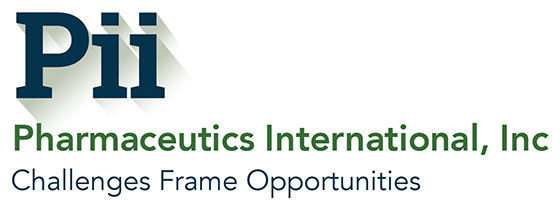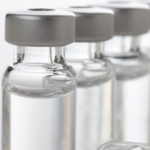Managing the Challenges of Small Batch Formulations
Managing the Challenges of Small Batch Formulations
By Bryan Braxton, Ph.D.

The early phases of drug development can be challenging for many reasons, especially with the pressure for speed to the clinic to prove value and preserve funding. That is why it is critical that a drug’s formulation and process are well understood for manufacture at the required scale, which is typically small in early development. This understanding of critical process parameters and impact on quality attributes related to the finished form can be especially challenging if you are working with a limited amount of API. This occurs when an API is expensive, potent, challenging to source, or even a highly regulated substance, such as a Schedule I drug, which requires permission from the Drug Enforcement Agency (potentially causing delays).
A multidiscipline team approach using strategic experimental design is needed to reduce the manufacturing risk of small scale batches. Information should be collected from as few experiments as possible to avoid wasting precious material. The data from these experiments should ideally identify confounding relationships and high risk scaling factors. The worst outcome is for GMP drug products at small scale to be unsuitable for clinical trials due to these API-consuming experiments producing data not useful for de-risking the manufacturing process. Avoiding this scenario requires not only the right expertise and equipment but also experience with successful GMP manufacturing at scales as small as a few liters. A risk-based investment in understanding at these small scales can prevent costly issues during scaling development that ultimately affect the timely delivery to patients in need.

One Approach Does Not Fit All
The design of a clinical formulation and its small scale process to manufacture starts with a focus on the critical to quality attributes (CQAs) required for safe and effective dosing. Changes to CQAs during the scaling process from lab bench to small batches in a GMP facility are not unexpected for non-aqueous, dispersed, or other complex injectable solutions. The approach to determining a process’s impact on a drug formulation is not one size fits all. Some R&D teams may default to the traditional one factor at a time (OFAT) approach. This can be an effective method to reduce the multitude of potential critical parameters, but this method is not ideal in cases of limited API. Instead, Design of Experiment (DoE) should be considered for understanding the key parameters and the relationships with CQAs. These experiments should start by investigating what others have documented in the pharmaceutical literature for similar dosage forms as well as leverage learnings across the technical teams at your facility. DoEs should be performed on equipment that supports scaling, including efforts to understand the equipment engineering and design constraints. Also, an understanding of the potential interactions of the formulation with the container closure system and processing components required for manufacture is essential before risking the use of large amounts of API.
Improving yields is key to small-batch processing. Manufacturing process efficiency is critical for reducing waste and improving the yield of these small batches. The benefits of a robotic ready-to-use multiformat filling line are vial, syringe, and cartridge format flexibility, system reliability, automatic pump prime, and calibration with an in-process control to ensure high product fill yield and quality. When your API is expensive or patient-specific, robotic fill lines maximize product yield and minimize product waste.

How to Identify the Right Partner for Your API Scale-Up
With all of the risks associated with dosage form scale-up, it is important to know how to identify the best CDMO for the job, especially when working with limited API. First and foremost, a partner who wants to understand any potential challenges will not only ask a lot of questions but also take the time to listen and present risk-based options based on capabilities of facility and budget for experiment investments. It is absolutely critical to listen, ask clarifying questions to understand, research the literature, and move forward with well-designed experimentation, at all scales of manufacture.
While these soft skills are fundamental, another important characteristic of a CDMO is the expertise its team possesses. There is little room for error, but there’s also no such thing as eliminating all risk. It is simply reducing it to the point where one can be scientifically confident moving to a bigger batch where more of the expensive API material will be at risk. Doing this begins with understanding the chemistry of your formulation, potential compatibilities with the container closure system and manufacturing contact surfaces, and process parameter requirements and equipment limitations. Analytical prowess is also key. Analytical chemistry is the window into the formulation, and quality methods create confident decisions for all development scientists involved with the drug. Finally, the CDMO must possess the ability to perform high sterility assurance aseptic processing. Most have this capability today, but this must be combined with the other skillsets necessary for overcoming formulation challenges. The CDMO should also have readily available manufacturing components to accommodate batch needs at all scales. Having a range of essential components and equipment at scales ready for use eliminates costly delays in an already crucial timeline.
The ability to understand critical parameters to reduce risk during the manufacture of small batches is key to maintaining clinical dosing and submission timelines. Partnering with a CDMO that has flexible, small scale capabilities, including robotic filling for higher yields of expensive dosage units, technical expertise, and experience with overcoming challenges is a valuable means to manage the complexities of modern biopharmaceutical manufacturing.
Talk to a Pii Scientist
ABOUT Pii
Pharmaceutics International, Inc. (Pii) is a US-based contract development and manufacturing organization (CDMO) located in Hunt Valley, Maryland. The experienced scientists, engineers, and staff at Pii pride themselves on adroitly employing a phase appropriate method of drug development for the prudent use of their customer’s resources as they solve challenging problems. In addition to offering end-to-end development services, Pii manufactures a variety of dosage forms to include complex parenteral drugs and has a wealth of analytical testing capabilities. Its Hunt Valley campus has four aseptic suites with lyophilization capabilities. Our talented professionals stand ready to help!

Bryan Braxton, Ph.D.
Senior Director, Aseptic R&D
Bryan Braxton joined Pii in October 2018 as Senior Director of Aseptic R&D. Bryan has 30 years of experience in the pharmaceutical industry.
Bryan held roles of increasing responsibility in sterile products at both Unither, AMRI, Pfizer, Abbott, and Glaxo, in the areas of Formulation Development, Process Transfer, Quality by Design, Technical Services, Contract Services, and Project Management.
Bryan earned a Ph.D. in Pharmaceutical Chemistry from the University of Kansas and is a registered pharmacist.







